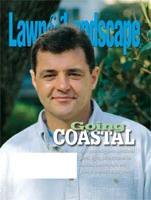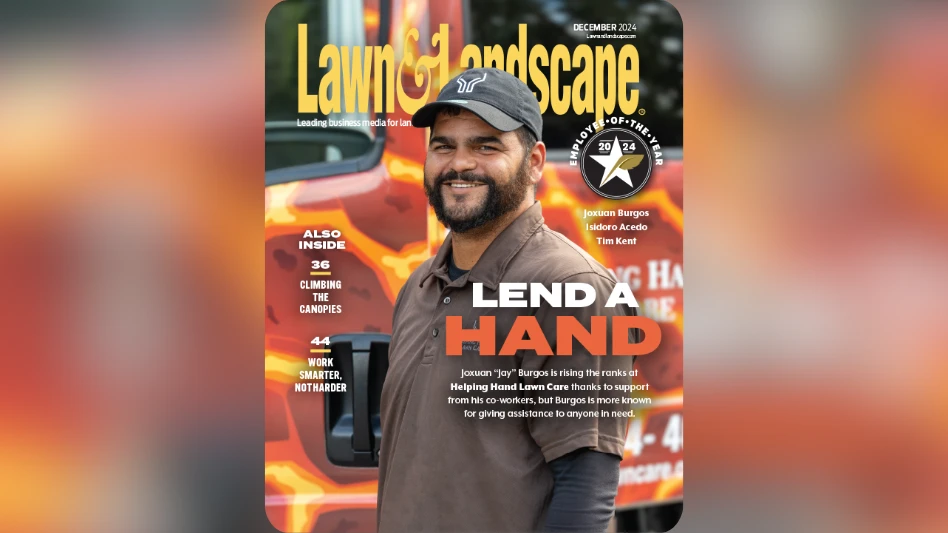Don’t let the unknown ruin what you think is a perfect bid.
I once was contacted by an irrigation contractor in New York to discuss his business. His firm was losing money on most of its projects and he wanted me to review his operation. The firm’s installation techniques were adequate, but morale was low stemming mainly from the installer’s frustration with the profitability, or lack thereof, of the irrigation division.
The crews revealed they were encountering rock or difficult soil conditions on many of their projects, resulting in slower installation times and high trencher maintenance costs. On top of that, the crews had no performance criteria or labor budgets. Likewise, the owner had little information to use in evaluating employee performance.
A look at estimating and cost accounting procedures revealed the real culprits – labor and material job costing, which were non-existent on the bid. This left the estimator guessing about labor costs and gave him no sound basis for estimating future work. Apparently, the estimator was extremely busy, leaving him little time to look at the job site prior to bidding the job. Visiting the job sites and digging a few holes would have disclosed the soil type. With proper job costing he could have then bid the project accordingly and for profit.
To prepare a thorough landscape irrigation bid, irrigation contractors must first visit the job site and uncover potential hidden problems. From there, the following tips can lead to increased bid accuracy and, ultimately, a profit boost.
AVOID PITFALLS. Many questions should be asked before bidding a job, but one should always come first, "Does this project fit my business and can it be profitable?"
Contractors need to learn to be selective about the type of projects they bid and avoid going after every potential project. Look at the size and type of proposed irrigation system to see if your firm has the experience and financial capability to do the project efficiently and profitably. Check the bonding and insurance requirements as well as taxes, licenses, permits and additional costs that may come up during the project.
After making the decision to put an estimate together, perform a job site inspection. Check the drive time from your office to the site to see if it is longer than an average drive time. If so, add that time to your estimate.
While at the site, dig some holes to check the soil conditions – this is worth the extra time.
Once the soil and ease of trenching/excavating is determined, look for steep slopes or poor drainage areas that may require hand digging or result in slower installation. Other thoughts to help refine your bid include checking whether the site has a lot of pedestrian or vehicular traffic. This may require fences and barricades, which cost money. Other questions to consider: "Will other construction trades be involved that could result in delays? Are all areas accessible to the equipment?"
PREPARE THE BID. Set up an estimate spreadsheet with the following headings across the top: quantity, size or measure, description, material unit price, material total, labor unit price, labor total, total materials and labor. Next, perform a quantity material takeoff. As you count heads, valves, etc., use a colored pencil to mark each one so you know which ones you’ve counted. This is helpful if you’re interrupted. Color all of the lateral lines using a different color for each pipe size, making judgments faster and more accurate.
Begin with the system quantities in the same order they will be installed. This practice helps eliminate omissions and gives you a better job understanding. Likewise, when listing the items on the bid form, do so in the order they will be installed to prevent omissions.
Beginning with mobilization, follow through with the point-of-connection, backflow preventer, specialty valves, sensors, trenching and backfill, mainline by size, quick coupler valves, manual drain valves (if necessary), automatic control valves, automatic controller, wire, lateral lines by size, heads by type, turnover material (keys, spare parts, etc.), testing and adjusting the system, cleanup, as-built drawings and winterization (if required).
Once all of the bid items are listed, contact your local supplier for current equipment prices. Enter the unit prices on the irrigation estimate sheet. Job costing records will provide the amount of labor required to trench and install the equipment. For example, it might take 15 minutes to install a pop-up head or 1½ minutes per foot to trench, backfill and compact the trench.
If the average hourly labor cost is $12 per hour, the labor unit price per head is $3 for the pop-up spray head and 30 cents per lineal foot for the trenching. The average labor cost should include payroll taxes such as FICA and state and federal unemployment taxes. Workers’ compensation insurance and the company paid portion of medical insurance should be included as well as retirement benefits, if applicable.
Many contractors forget about overtime expenses for a seasonal business. If your crews work 50 hours a week, overtime premiums need to be added to the average labor cost. Holiday, vacation and sick pay also should be included, if applicable.
After labor totals are entered in the estimate under labor quantities, extend all of the material and labor units, enter totals both down and across the spreadsheet and add the total columns both down and across. This is important. Many bid errors are found using this double-check method.
Next, add up the material and labor totals from all of the irrigation estimate sheets and enter those totals on the irrigation bid summary sheet. Compute the sales tax on material (if applicable) and round up to the nearest dollar. Do this with all your extensions and calculations to speed up the process.
Now, determine your overhead cost. Overhead should include all business expenses not listed on the irrigation estimate sheet or in the labor cost and labor, burden mentioned earlier. If you’re not sure what to include or how to go about calculating overhead, ask your accountant for help.
If the estimate isn’t accurate, you could lose a lot of money or obtain few jobs.
For example, if your overhead is 25 percent of total sales, that percentage must be converted to an add-on percentage which, in this case, equals 33 percent. Calculate the overhead on the labor and material total and enter the total.
Profit should be a minimum of 10 percent of your sales price or an add-on of 11 percent. Because of the high risk involved with irrigation systems and all of the unknowns involved with weather, underground utilities and excavation, I recommend that you set a minimum profit goal of 15 percent.
Enter any miscellaneous costs, i.e. list subcontractors at cost and add a mark-up of 10 percent to 20 percent to cover the cost of dealing with the subcontractor. Add a mark-up on subcontractors just in case they go out of business and your firm is stuck paying more to complete the work. If a performance bond is required, add your cost for a bond and total the estimate. Give the estimate to someone else to check the math and review it.
ACCURACY CHECK. Lastly, ask yourself if you feel the estimate is accurate. Do you need the work? Can you handle the project without a lot of problems and will it be easy to do? If you have any doubts about the project or if the market will allow a higher price, add more money. At one time, we prepared an estimate totaling $25,000 for an irrigation project and added $4,500 to the total because things didn’t feel right. The result - we were the low bidder at $29,500. The next highest bidder was $29,900.
Develop unit prices for smaller projects to save time. The unit prices cover the point of connection, backflow preventer, pressure reducing valve, mainline, controller, valves and heads. For example, the unit price for a spray head should include 15 to 20 feet of finch pipe, fittings, the head and nozzle and the connection under the head. The mainline unit price should include wire.
Remember to adjust the unit prices when material or labor costs change.
Accurate estimating is the key to a profitable irrigation contracting business. Implementation of a good estimating and job costing system will keep you ahead of your competition and help your firm be more profitable.
The author is president of Keesen Water Management, an irrigation design and consulting firm in Denver, Colo.The preceding article was excerpted from The Complete Irrigation Workbook. For information on ordering the text, call Megan Erickson at 800-456-0707 or visit www.lawnandlandscape.com/store.

Explore the February 2004 Issue
Check out more from this issue and find your next story to read.
Latest from Lawn & Landscape
- Senske acquires 2 Nutri-Lawn franchise operations in Canada
- Our Holiday Lighting Contest rolls on
- LawnPro Partners acquires Ohio's Meehan’s Lawn Service
- Landscape Workshop acquires 2 companies in Florida
- How to use ChatGPT to enhance daily operations
- NCNLA names Oskey as executive vice president
- Wise and willing
- Case provides Metallica's James Hetfield his specially designed CTL





